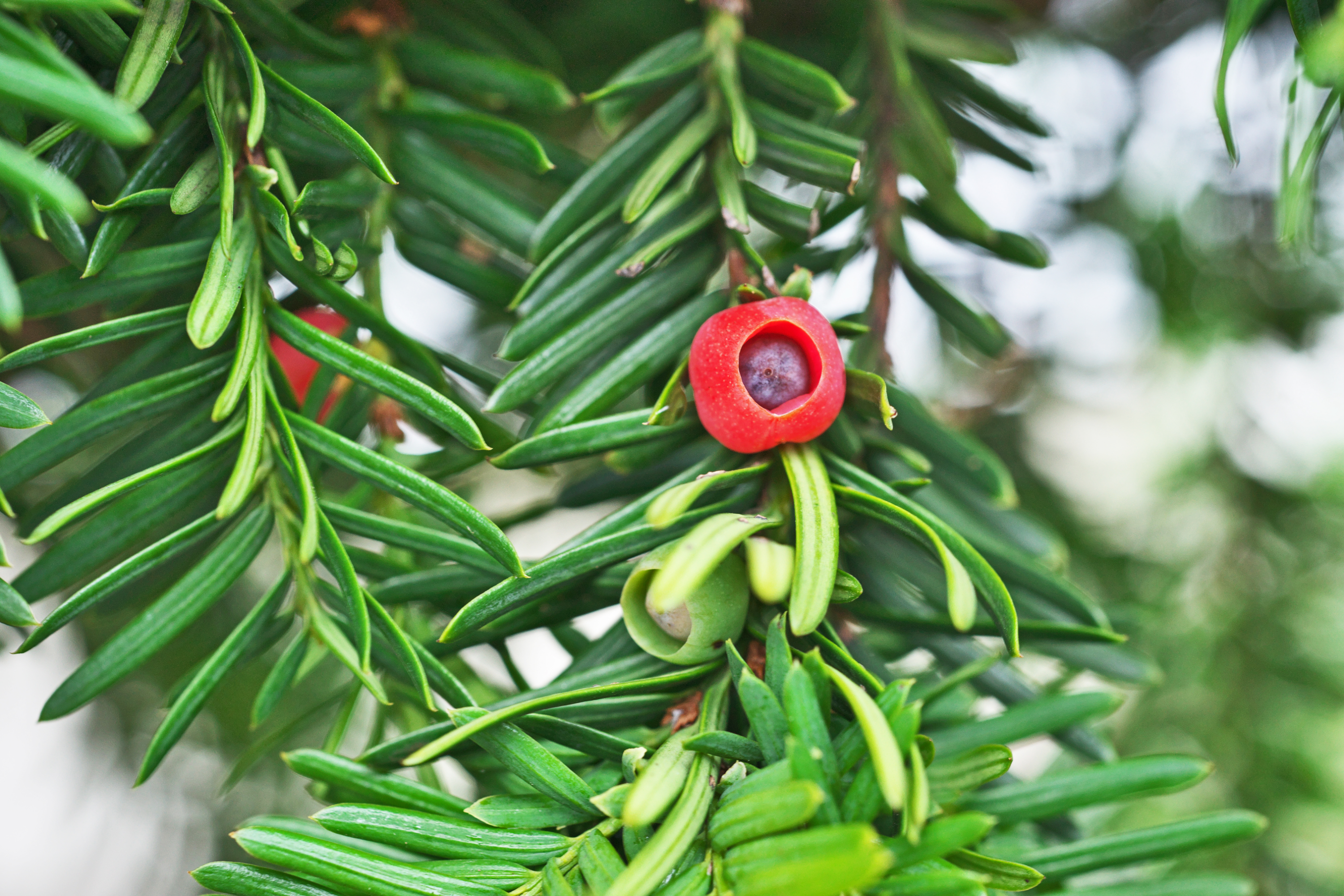Japanese yew
(Taxus cuspidata)

Description
Taxus cuspidata, the Japanese yew or spreading yew, is a member of the genus Taxus, native to Japan, Korea, northeast China and the extreme southeast of Russia. It is an evergreen tree or large shrub growing to 10–18 m tall, with a trunk up to 60 cm diameter. The leaves are lanceolate, flat, dark green, 1–3 cm long and 2–3 mm broad, arranged spirally on the stem, but with the leaf bases twisted to align the leaves in two flattish rows either side of the stem except on erect leading shoots where the spiral arrangement is more obvious. The seed cones are highly modified, each cone containing a single seed 4–8 mm long partly surrounded by a modified scale which develops into a soft, bright red berry-like structure called an aril, 8–12 mm long and wide and open at the end. The arils are mature 6–9 months after pollination. Individual trees from Sikhote-Alin are known to have been 1,000 years old. The entire yew bush, except the aril (the red flesh of the berry covering the seed), is toxic due to a group of chemicals called taxine alkaloids. Their cardiotoxicity is well known and act via calcium and sodium channel antagonism, causing an increase in cytoplasmic calcium currents of the myocardial cells. The seeds contains the highest concentrations of these alkaloids. If any leaves or seeds of the plant are ingested, urgent medical advice is recommended as well as observation for at least 6 hours after the point of ingestion. The most cardiotoxic taxine is Taxine B followed by Taxine A; Taxine B also happens to be the most common alkaloid in the Taxus species. Yew poisonings are relatively common in both domestic and wild animals who consume the plant accidentally. The taxine alkaloids are absorbed quickly from the intestine and in high enough quantities can cause death due to general cardiac failure, cardiac arrest or respiratory failure. Taxines are also absorbed efficiently via the skin and Taxus species should thus be handled with care and preferably with gloves. Taxus Baccata leaves contain approximately 5 mg of taxines per 1g of leaves. The estimated (i.e. not by any means a fact) lethal dose (LDmin) of Taxus baccata leaves is 3.0-6.5 mg/kg body weight for humans There is currently no known antidotes for yew poisoning, but drugs such as atropine have been used to treat the symptoms. Taxine remains in the plant all year, with maximal concentrations appearing during the winter.
Taxonomic tree:







